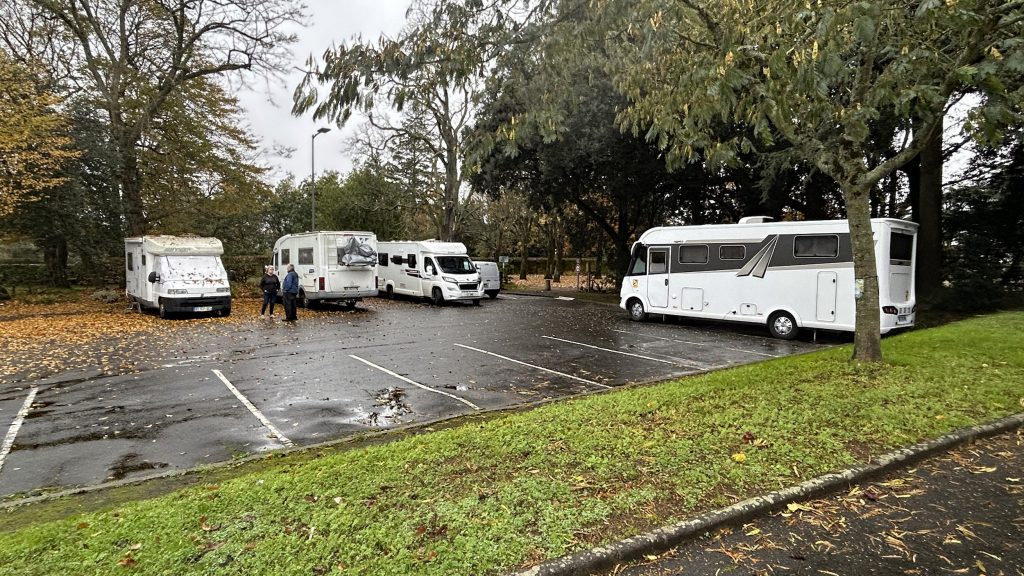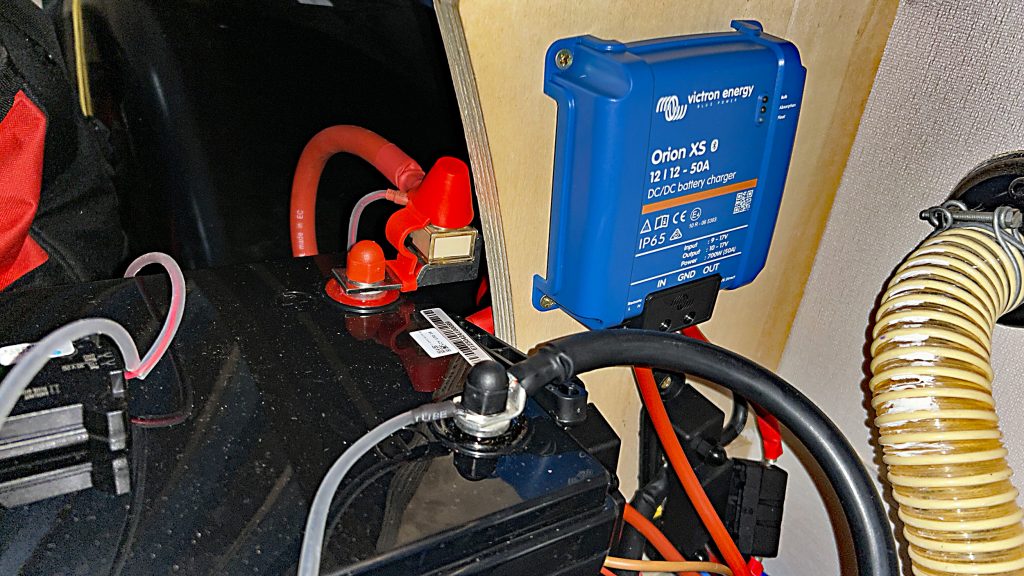Since we have had the motorhome we have been less that happy with the domestic battery, it looks new (although I have been unable to find a date label) but after charging to full it discharges to empty very quickly, this was annoying but not a great problem in the summer as we had our trusty Jackery portable power station to run portable 230 volt items but without a lot of kerfuffle we still needed the domestic battery to run the lights and the heater blower fan. The blown air heating runs on mains electricity and/or gas but the blower fan is powered by the domestic battery.
As we drove north from Portugal the temperature started dropping and one night while on an aire with no services, we put the heating on gas and sat back waiting for the van to get toasty warm after just a short while the battery ran out of oomph, the fan stopped and the heating shut down – oh bugger!!!
For the remainder of the journey we made sure all stopovers provided an EHU.
Once home I started researching new batteries, lead acid batteries have a useable 50% of their stated capacity greater discharge could irreparably damage the battery, AGM batteries should be as a general rule be discharged to the same level but could on occasion be discharged to 80% without irreparable damage but with possible shortening of the battery life. Lead carbon batteries had similar “over discharge” properties to AGM’s but had the added advantage of a useable capacity of 60%.
Standing head and shoulders above the lead based batteries are Lithium Iron Phosphate batteries (LifePO4), these can be regularly discharged to 20%, be charged quickly and have a very long life. When we were looking to replace our boat batteries LiFePO4 batteries were unbelievably expensive but in the four years since prices have tumbled and a Fogstar 100ah lithium battery gives a useable 100ah for £219.99 while a straight replacement 110ah lead acid battery costs £190.00 and gives just 55ah.
It seems a no brainer until you start to look at how you charge LiFePO4 batteries. When a friend bought one of these types of battery a year or so ago he was told by the supplier that it was a “plug and play”, just take out the old and put in the new. When I made the same enquiry I was told that the smaller LifPO4 batteries i.e. up to around 100 amp would almost certainly work in any motorhome but may/would in the long term damage the vehicle electrical system. A larger battery, such as we wanted, needs a completely different charging system, being an electronic idiot I don’t understand exactly but it’s all about charge voltages, the voltage and duration of the absorption phase of charging and the voltage of the float charge phase.
With the rocketing price that campsites are charging for EHU that is only going to increase we wanted to be able to stay off grid for at least four days while using both 12 and 240 volt equipment so settled on a 305ah battery, giving a useable 250ah which we estimate should give us around a week before we need to recharge, we would later link this to a pure sine wave inverter/charger to charge the battery when on EHU and run the 240 volt equipment when not on EHU.
The next problem was to find an engineer to supply and fit the kit needed. As we intended to get a Fogstar battery we went to them for installer recommendations and after further research settled on a mobile company Sunny Side Up Solar who operated from the town of Ibstock just 12 miles from Hinckley.
Most of what they said was required went whoosh straight over my head but involved disconnecting the old charging system on both the 12 volt side and the 230 volt side. The old 12 volt system was replaced by a 12V Victron Energy Orion XS 12/12-50A DC-DC charger which (as I understand it) charges the domestic lithium battery using the engine battery which in turn is charged as previously by the engine alternator. The fitter, Oli, from Sunny Side Up Solar arrived as promised and spent a whole day installing and re-wiring the new battery and its associated kit, to what seems to me, a very good standard.
That is the first part of the job done, the second half of the job is to install a charger/inverter which will enable us to use 230 volt equipment through the vans 230 volt circuit.
We decided to fit a Victron MultiPlus 12/1600/70-16 Inv/Charger, Victron stuff is expensive but it is very good quality.
Soon after the new battery system was fitted we travelled north to Cumbria once again house sit for friends while they spent some time soaking up winter sun. We were told that the battery would be fully charged (they are delivered charged to 35%) by the time we got there. Not so. When we arrived in Cumbria the charge was around 65%. On our way south several weeks later we monitored the B2B charger it was managing to supply just 7 amps. I phoned Sunny Side Up Solar who said that was certainly not right but not to worry they would sort it when then came back to fit the second d half of the job.
On the due date the installation engineer from Sunny Side Up Solar, on this occasion Stu, arrived as promised to complete the install. Before he started we discussed the low B2B output which Stu diagnosed as an earth problem which he assured me he would fix as he installed the Victron equipment.
Stu worked hard all day, he had a few difficulties, but with calm analytical methods he resolved all and by the time he left all was running beautifully including the B2B which was now putting out 38 amps with the engine on tickover – happy days!!!
The final task is to learn how to use the new equipment. In the summer, even without upgrading the solar system we should be able to remain off grid almost indefinitely. The winter will be more difficult but we imagine that by use of the Jackery and moving every few days should be able to last a good period of time without resorting to an EHU

